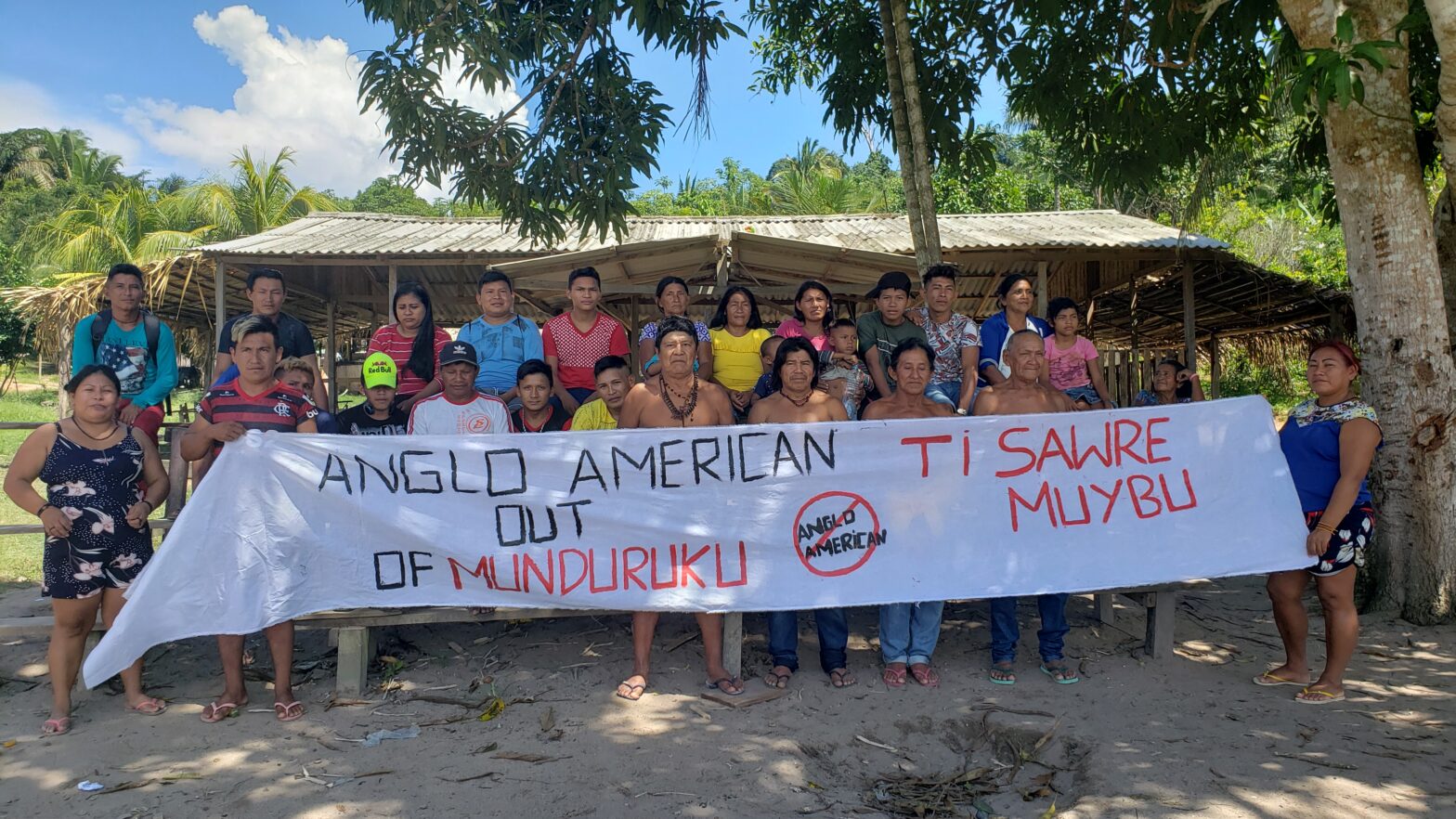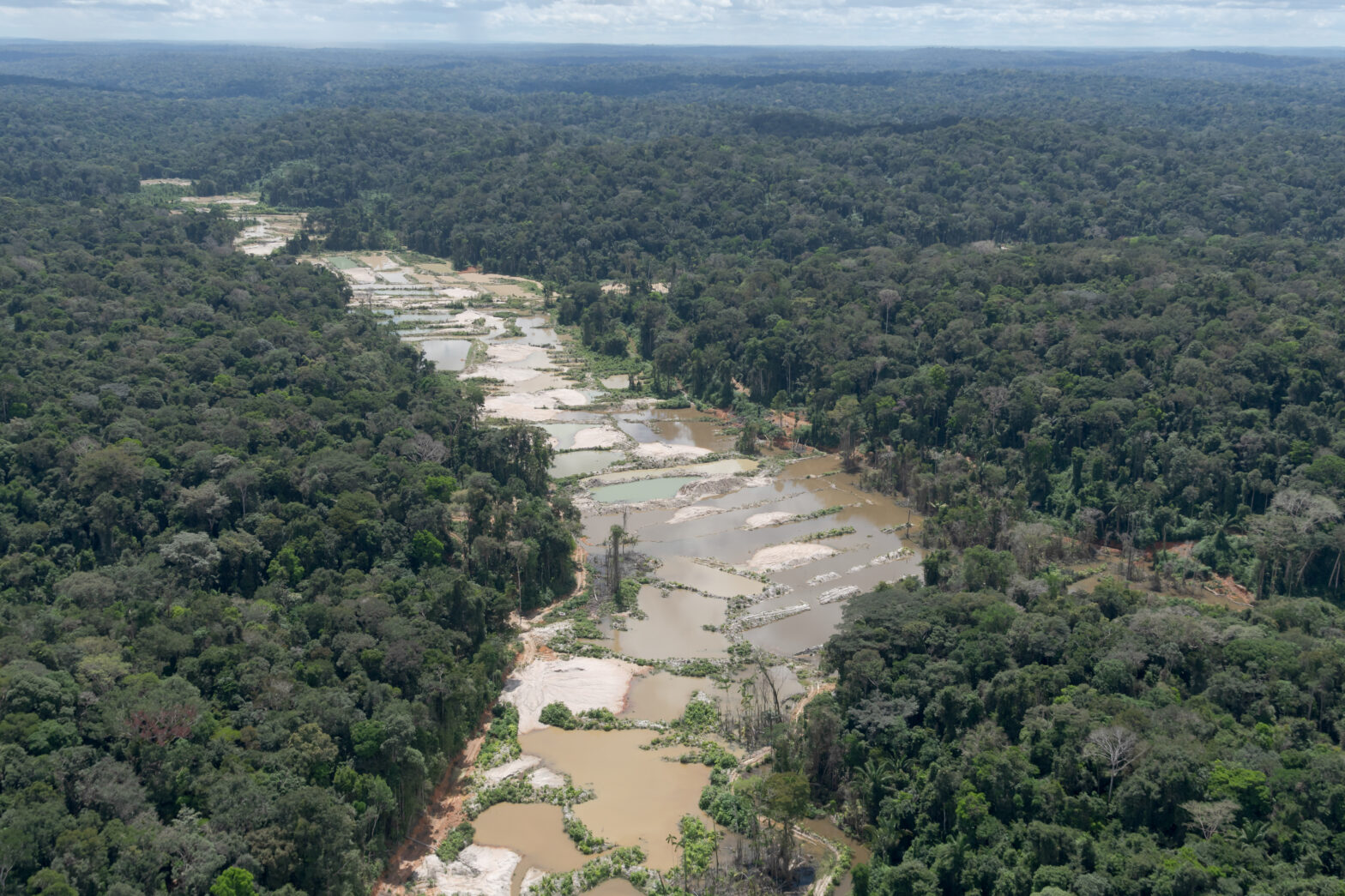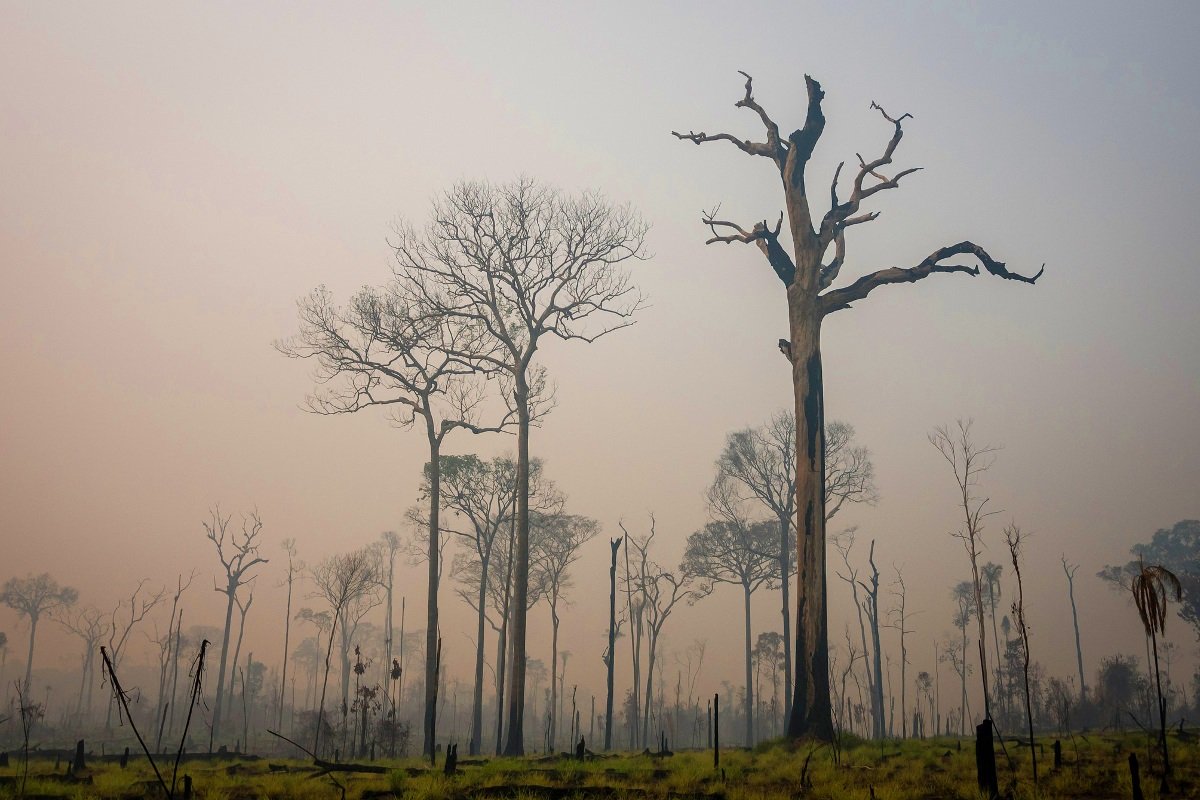Exclusive survey reveals 145 requests filed with the National Mining Agency as of November 3, the highest number in 24 years. A bill presented by President Bolsonaro would legalize activities currently prohibited by the Constitution. Image: operation against illegal mining in TI Kayapó, in 2017. Photo: Felipe Werneck/InfoAmazonia.
by Hyury Potter, Eduardo Goulart de Andrade, Naira Hofmeister and Pedro Papini
Translation by Claudia Horn
It is unconstitutional, but the National Mining Agency (ANM) keeps active more than 3 thousand requests for mining activities in Indigenous Lands in the Amazon. This reveals data from the InfoAmazonia project “Mined Amazon”. Any mining activity, even research, is outlawed in these areas. But this does not prevent the submission of dozens of new requests each year for processing by the agency—which should reject these immediately but does not do so.
Not even the Covid-19 pandemic, which by early November caused the death of 867 indigenous people and contaminated more than 38,000 according to the Representation of Indigenous Peoples of Brazil (Apib), has damped the greed of the mining sector. In just ten months, 145 requests were recorded in 2020—the highest number in 24 years. The Kayapó territories in the state of Pará are the most affected, targeted by more than a third of this year’s requests.
Interest in exploring indigenous territories has grown during Jair Bolsonaro’s Presidency. The average of 50 requests per year in the previous two years has more than doubled, reaching an average of 117 in twelve months, since his inauguration. In comparison with his predecessors Michel Temer, Dilma Rousseff, and Luiz Inácio Lula da Silva (Lula), Bolsonaro leads in new requests filed to ANM in the first two years of his mandate.
Bolsonaro, a retired military official, not only encourages predatory mining in general but also claims that “Indians are increasingly becoming human beings just like us”—which led indigenous leaders to formally denounce the president for a crime of racism.
In February 2020, the government presented to Congress the bill 191/2020, which would open the possibility of mining on indigenous lands. The only indigenous Congresswoman Joênia Wapichana (Rede-RRR) insisted against the legislative proposal, pointing out that it is unconstitutional and threatens native peoples.
“The bill 191 practically attempts to rewrite article 176 of the Constitution—this is absurd! It tries to restrict the exclusive and indefinite territorial use [by indigenous people], guaranteed by the Constitution as a fundamental right. An approval of the bill would mean further environmental crimes and degradation that put the lives of indigenous peoples at risk,” the Congresswoman announced.
On the map, hover the mining requirements to see infowindow with the applicant, type of record, year, ore, number and last movement of the mining requirement process. Click on PAs and ILs to see the year of creation, size, demarcation phase, and ethnicities.
The InfoAmazonia project “Mined Amazon” crosses the location data of applications filed with the ANM with georeferenced data of the boundaries of Brazil’s Amazonian Indigenous Lands and maps overlaps. The initiative also developed the @amazonia_minada alert profile on Twitter, which tracks ANM processes in real-time, tweeting when a new mining request is filed within any protected area of the Amazon.
Congress bills and statements trigger mining demand
The submission of the bill 191/2020 by the Bolsonaro government triggered an immediate growth of requests to ANM. Demand has also been promoted by other events related to mining in indigenous territories: such as in June, when the Brazilian Federal Supreme Court considered a judgment affecting the demarcation of indigenous lands; or in August, when both Vice President Hamilton Mourão and Environment Minister Ricardo Salles publicly lobbied for mining in protected areas.
In previous years, spikes in requests also responded to important debates within the National Congress about regulating mining activities in protected areas. The most emblematic case is the year 1996, when 731 requests were filed within indigenous territories—an absolute and unique record number. That year, Senator Romero Jucá (PFL-RR) presented a bill to legalize mining in indigenous territories, which was passed in the Senate and referred to the House.
In 2008, the third year with a particularly high number of 116 applications, a Special Committee of the Chamber made a recommendation indicating the approval of the bill of Jucá. The recommendation was published in the middle of 2008 and 65.5% of the mining requests of that year were filed between July and December, following the congressional debate. This bill is still pending with the most recent update in 2019.
At the end of September, the Bolsonaro government published a
Mining and Development Program that mentions the objective of “promoting the regulation of mining on indigenous land.” At the same time, Representative Joênia Wapichana presented a draft legislative decree against this plan. The 1988 Constitution requires National Congress to authorize each individual application for mining on indigenous lands, guaranteeing a democratic process rather than a bureaucratic move to decide on exploration. But the analysis of InfoAmazonia reveals that this did not curtail interest in these areas. On the contrary. Of the current 3285 active cases, 2440 (74%) were filed after the approval of the constitution.
“The Constitution is quite clear when it comes to the possibility of Congress approving mining on indigenous lands in cases of exception, which has to be in the national interest. But what the current government tries, is to make this process the rule. This causes an increase in requests for mining on these lands and is yet another threat to these peoples already suffering under high levels of deforestation, fires, and invasions. And this year they still have to face Covid-19,” says Tiago Moreira dos Santos, an anthropologist of the Program for Monitoring Protected Areas of the Socio-Environmental Institute (ISA).
Mining applications represent a real threat to protected areas especially in the Legal Amazon, where 98% of Brazil’s already recognized indigenous territories are located. It is largely thanks to these territories that the forest there remains standing. But this may change if the Bolsonaro plan goes ahead. Researchers at the Remote Sensing Center of the Federal University of Minas Gerais (UFMG) calculate that the change could mean the devastation of an area the size of Venezuela, as well as an economic loss of $5 billion a year for the loss of services naturally provided by the forest—especially in storing greenhouse gases, which contributes to the planet’s climate balance.
Requests convey “appearance of legality,” informs the Federal Prosecutor’s Office
One of the problems pointed out by the Federal Prosecutor’s Office about mining requests in indigenous areas is that, although currently being unconstitutional, the fact that there is an active protocol in the ANM conveys an “apparent legality” of irregular mining activities. This position was also defended by substitute federal judge Felipe Gontijo Lopes in a sentence of August 2020. The judge canceled formal mining attempts on indigenous lands in the region of Santarém, in western Pará, a state that concentrates almost half of the applications on indigenous lands this year:
“These requests for mining research and mining itself, even if not granted, bring confusion and unrest to indigenous people, since they “assume” legality of exploitation. By not rejecting them, ANM fuels undue expectations of preference, thus undermining the state’s duty to protect indigenous communities, especially their territories,” wrote the magistrate.
The Federal Prosecutor’s Office argues that these requests should not even be processed by the mining agency. This understanding has also been shared by the Justice Courts that rejected mining permission requests in the Amazon states Amazonas, Roraima, Amapá, and, more recently, in Rondônia, in addition to the western region of Pará.
In response to our consultation for this report, the National Mining Agency stated there is no restriction to file requests, but assured that those located on indigenous lands do not progress. “Anyone can request, but if irregularities are identified, requests will be declined,” the agency informed through its press office. The statement contradicts the official records of the agency, which in over 80 cases proceeded, by granting research titles or even authorizing the exploration of minerals.
In a note, the National Indian Foundation (FUNAI) recognized that mineral exploration on indigenous lands is an illegal activity. However, the foundation also stated that PL 191/2020 “should be thoroughly discussed in the National Congress, so that the final text addresses the needs of all segments involved”.
This report is part of the Mined Amazon, InfoAmazonia’s special project supported by the Amazon Rainforest Journalism Fund and the Pulitzer Center.





